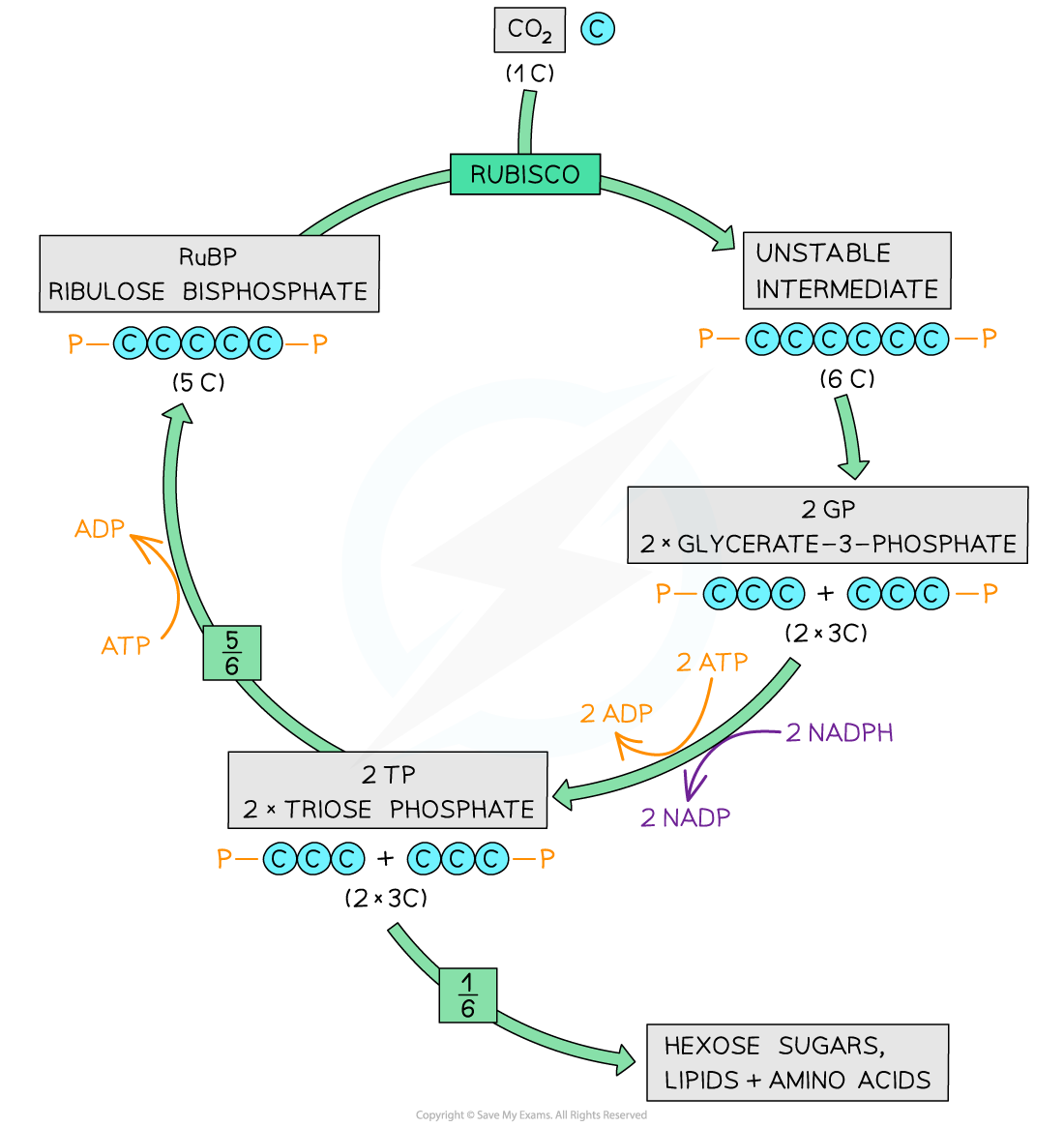- 翰林提供学术活动、国际课程、科研项目一站式留学背景提升服务!
- 400 888 0080
CIE A Level Biology复习笔记13.1.8 The Calvin Cycle
Stages of the Calvin Cycle
- Energy from ATP and hydrogen from reduced NADP are passed from the light-dependent stage to the light-independent stage of photosynthesis
- The energy and hydrogen are used during the light-independent reactions (known collectively as the Calvin cycle) to produce complex organic molecules, including (but not limited to) carbohydrates, such as:
- Starch (for storage)
- Sucrose (for translocation around the plant)
- Cellulose (for making cell walls)
- This stage of photosynthesis does not, in itself, require energy from light (hence light-independent) and can therefore take place in light or darkness. However, as it requires inputs of ATP and reduced NADP from the light-dependent stage, the Calvin cycle cannot continue indefinitely in darkness, as these inputs will run out
- There are three main steps within the Calvin cycle:
- Rubisco catalyses the fixation of carbon dioxide by combination with a molecule of ribulose bisphosphate (RuBP), a 5C compound, to yield two molecules of glycerate 3-phosphate (GP), a 3C compound
- GP is reduced to triose phosphate (TP) in a reaction involving reduced NADP and ATP
- RuBP is regenerated from TP in reactions that use ATP
Carbon fixation
- Carbon dioxide combines with a five-carbon (5C) sugar known as ribulose bisphosphate (RuBP)
- An enzyme called rubisco (ribulose bisphosphate carboxylase) catalyses this reaction
- The resulting six-carbon (6C) compound is unstable and splits in two
- This gives two molecules of a three-carbon (3C) compound known as glycerate 3-phosphate (GP)
- The carbon dioxide has been ‘fixed’ (it has been removed from the external environment and has become part of the plant cell)
- Glycerate 3-phosphate (GP) is not a carbohydrate but the next step in the Calvin cycle converts it into one
Reduction of glycerate 3-phosphate
- Energy from ATP and hydrogen from reduced NADP – both produced during the light-dependent stage of photosynthesis – are used to reduce glycerate 3-phosphate (GP) to a phosphorylated three-carbon (3C) sugar known as triose phosphate (TP)
- One-sixth of the triose phosphate (TP) molecules are used to produce useful organic molecules needed by the plant:
- Triose phosphates can condense to become hexose phosphates (6C), which can be used to produce starch, sucrose or cellulose
- Triose phosphates can be converted to glycerol and glycerate 3-phosphates to fatty acids, which join to form lipids for cell membranes
- Triose phosphates can be used in the production of amino acids for protein synthesis
Regeneration of ribulose bisphosphate
- Five-sixths of the triose phosphate (TP) molecules are used to regenerate ribulose bisphosphate (RuBP)
- This process requires ATP

The Calvin cycle
Calvin Cycle Intermediates
- Intermediate molecules of the Calvin cycle (such as glycerate 3-phosphate and triose phosphate) are used to produce other molecules
- Glycerate 3-phosphate (GP) is used to produce some amino acids
- Triose phosphate (TP) is used to produce:
- Hexose phosphates (6C), which can be used to produce starch, sucrose or cellulose
- Lipids for cell membranes
- Amino acids for protein synthesis
转载自savemyexams

早鸟钜惠!翰林2025暑期班课上线

最新发布
© 2025. All Rights Reserved. 沪ICP备2023009024号-1








